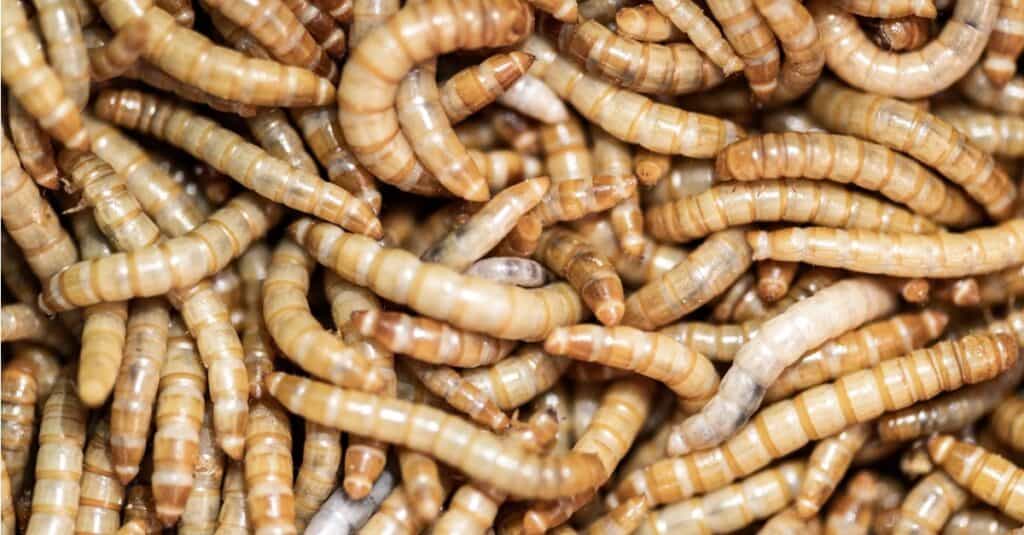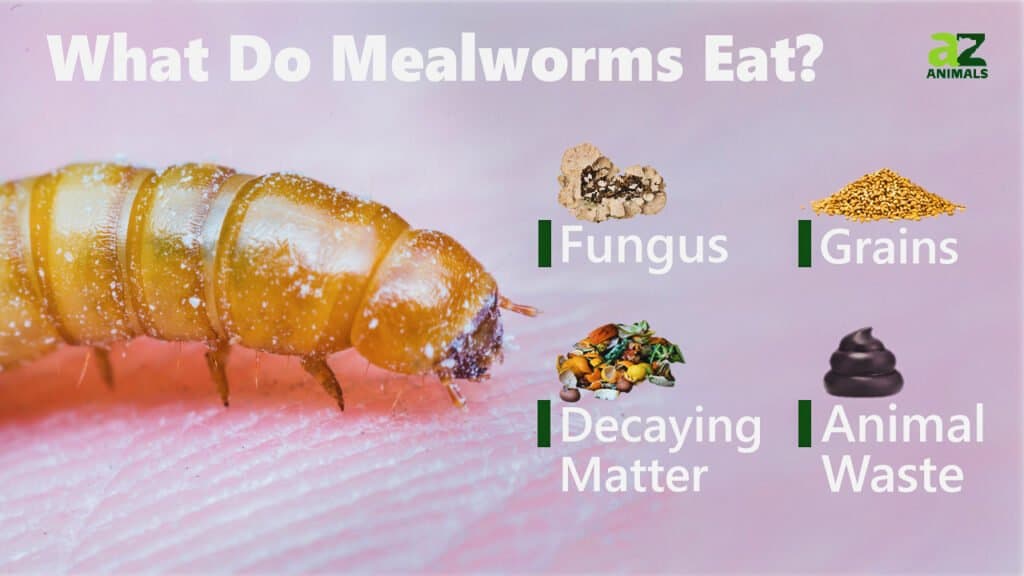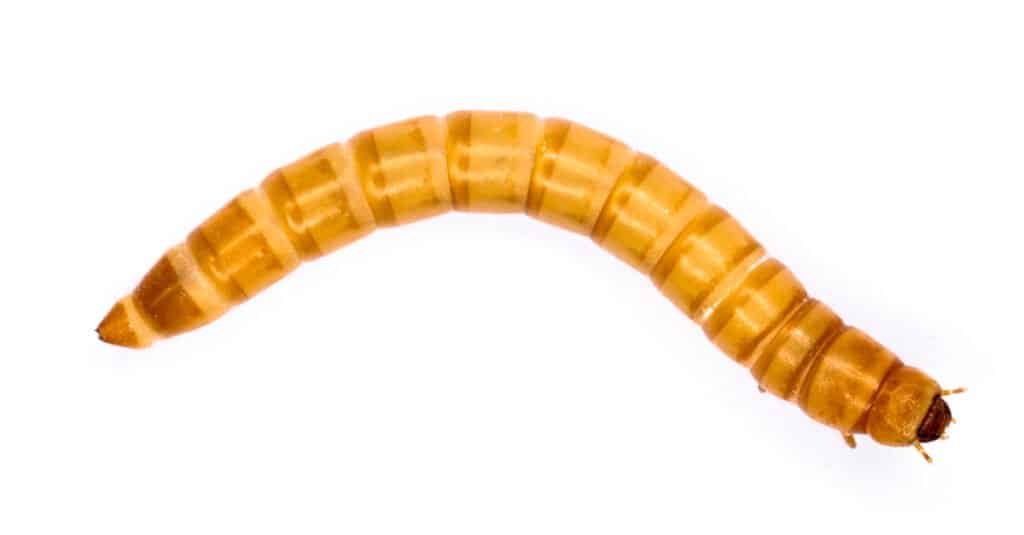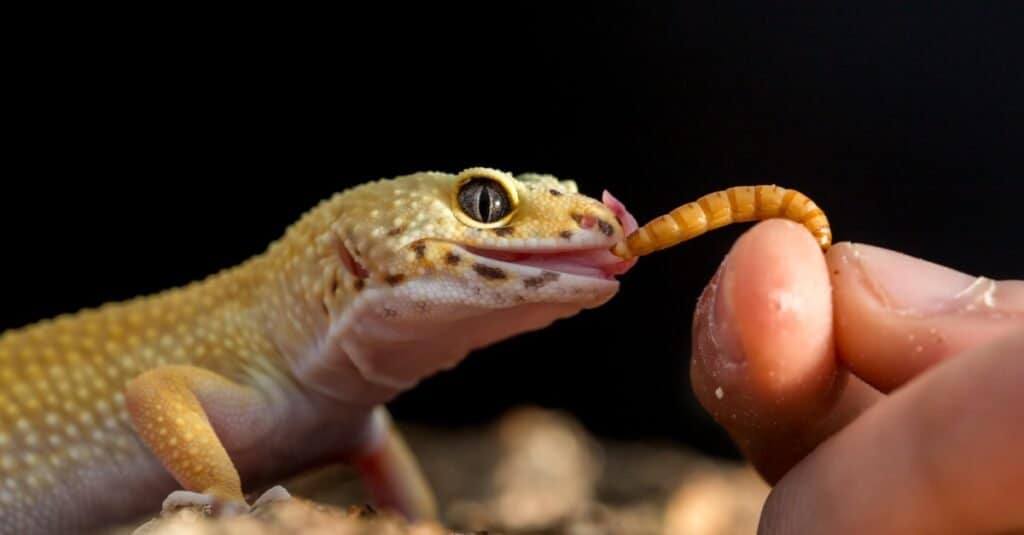
The post From Plastic to Protein: What Mealworms Eat and Their Surprising Ecofriendly Contribution appeared first on A-Z Animals.
Serbian scientists at Belgrade’s Institute for Biology are developing a novel way to combat plastic waste by training mealworms to digest polystyrene, a common but persistent material used in packaging and insulation. Supported by the Serbian government, the UNDP, and other donors, the project has adapted larvae to efficiently break down Styrofoam using their gut bacteria to convert it into carbon dioxide and water. The mealworms are able to accomplish this without leaving behind microplastic residue. This is an amazing scientific breakthrough, since Styrofoam can take over 500 years to naturally decompose. Early experiments show that mealworms produce just one to two grams of CO₂ when breaking down a kilogram of Styrofoam, compared to massive emissions generated from incineration.
Mealworms are the larvae of the yellow mealworm beetle. These small tan and brown worm-like critters are often found outside near tree stumps or underneath leaves. Mealworms are generally considered pests, but for pet owners they can very valuable. Many species of lizards, fish, and birds eat mealworms as a source of protein and fat. Chickens and other barnyard animals also enjoy mealworms. They are even safe for humans to eat!
Once matured, mealworms turn into yellow mealworm beetles (Tenebrio molitor), a species of darkling beetle. These large, black beetles are completely harmless to humans. Their only defense is the mildly foul smell that they emanate. These beetles are scavengers and omnivores, mainly living on decomposing trees and other plants, leaves, and decaying fungi. They mainly live in the wild and make a good source of food for other animals, such as birds, rodents, spiders, lizards and other predatory insects.
Mealworms are a common meal for pets, but you might be wondering what mealworms eat themselves (other than Styrofoam). Let’s dig into their diet!
This post was updated on August 21, 2025 to include Serbia’s ecofriendly mealworm project.
What Are Mealworms?

©iStock.com/OK-Photography
Mealworms aren’t actually worms at all. They are the larval state of the darkling beetle. Beetles have four stages of development:
- Egg
- Larva
- Pupa
- Adult
When the darkling beetle lays an egg the egg takes anywhere from 4 to 20 days to hatch. What emerges from the egg is a mealworm. Mealworms will eat everything they can and then enter the pupa stage of development by cocooning themselves inside an exoskeleton. After a period of development the adult beetle will bust out of the exoskeleton and search for other beetles so that it can start laying eggs which will begin the whole process again. A single female darkling beetle can lay up to 500 eggs in her lifetime. That’s one of the reasons why there are so many mealworms.
During the larva stage of development the mealworm’s job is to find enough nutrients to sustain the pupa while it finishes growing. That’s why mealworms are prolific eaters and will eat just about anything.
What Do Wild Mealworms Eat?

In the wild mealworms will eat vegetables, decaying matter, leaves, animal waste, grains, and fruit.
The like to burrow into soil, decaying leaves, grain that’s rotting in a field, vegetable gardens, and places that have a lot of vegetation. Mealworms are omnivores, which means that they will eat all kinds of food. They will even eat other mealworms that have died. Mealworms like to eat apples and other fruits, potatoes, oats and grains, and birdseed. Wild mealworms also eat decaying matter like fungus, dead leaves, rotting fruits and vegetables, and rotting plants.
What Do Captive Mealworms Eat?

Captive mealworms will eat vegetables, dog food, fruits, and oatmeals.
©Bezzangi/Shutterstock.com
Mealworms can also be raised by hand in captivity. Why would anyone want to raise mealworms? A lot of people raise mealworms because mealworms are a great source of protein for pets like fish and lizards. Mealworms breed quickly and many people find that it’s more convenient to grow mealworms than to go to the pet store and buy them to use as food for their animals. Captive mealworms which are raised to be food for other animals eat whatever they are fed. They can survive on oatmeal, bran, fruits, vegetables, algae, and even dry cat or dog food. But mealworms prefer to eat fruits and vegetables like potatoes, apples, and carrots.
Raising Mealworms at Home

Mealworms can ingest and digest around 30 to 39mg of polystyrene daily.
©Dr.MYM/Shutterstock.com
It’s very easy to grow mealworms at home. All you need to grow mealworms at home is a container that will hold them, like a plastic storage container with a lid. It doesn’t have to be large. Poke holes in the top of the container that will allow air to flow in but aren’t so big that the tiny mealworms will escape.
Put a few inches of a substrate like whole oats or bran or a mixture of cereals in the container. The mealworms will dig into that substrate to lay their eggs and they will eat it too. Mealworms eat grains like oats. Slice a potato or an apple in half in put half in the container. The mealworms will eat the potato or apple and get water from it too. There’s no need to put a separate water source in the container. Make sure that you change the food often and don’t let it get moldy.
You will need to buy a couple of dozen mealworms from a pet store to start off your mealworm container. Put the mealworms in the container and put the container somewhere warm. The idea temperature for mealworms is around 72 degrees. If you put them someplace cold the cold will stop all development and put the mealworms into suspended animation. If you have ever wondered why mealworms that you buy are kept refrigerated that’s why. The cold makes them go dormant.
Let the mealworms continue developing and after a couple of weeks they will go through the growth process to become darkling beetles. The beetles will mate, the females will lay eggs, and your container will be stuffed with mealworms before you know it. Just keep feeding the mealworms and you should have a steady supply of them that you can use to feed your chickens, birds, lizards, and other animals.
What Don’t Mealworms Eat?

Pets like leopard geckos will feast on mealworms.
©iStock.com/MattiaATH
There are not too many things that mealworms won’t eat except fruits belonging to the citrus family and onions. They’re easy to keep and raise so that you will have a steady protein rich food source for your chickens, lizards, birds, and other pets.
The post From Plastic to Protein: What Mealworms Eat and Their Surprising Ecofriendly Contribution appeared first on A-Z Animals.
August 21, 2025 at 11:53PMLex Basu
.jpeg)
.jpeg)

0 Comments